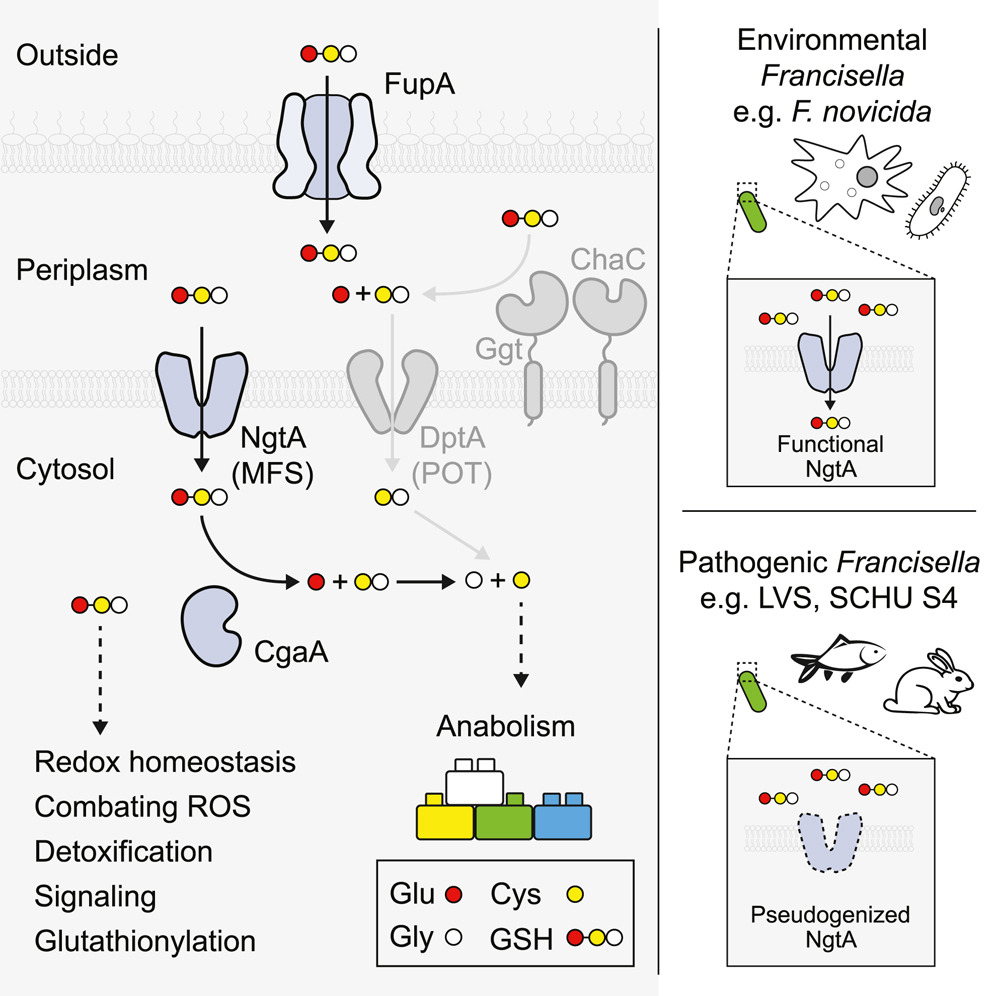Abstract
Glutathione (GSH) is an abundant metabolite within eukaryotic cells that can act as a signal, a nutrient source, or serve in a redox capacity for intracellular bacterial pathogens. For Francisella, GSH is thought to be a critical in vivo source of cysteine; however, the cellular pathways permitting GSH utilization by Francisella differ between strains and have remained poorly understood. Using genetic screening, we discovered a unique pathway for GSH utilization in Francisella. Whereas prior work suggested GSH catabolism initiates in the periplasm, the pathway we define consists of a major facilitator superfamily (MFS) member that transports intact GSH and a previously unrecognized bacterial cytoplasmic enzyme that catalyzes the first step of GSH degradation. Interestingly, we find that the transporter gene for this pathway is pseudogenized in pathogenic Francisella, explaining phenotypic discrepancies in GSH utilization among Francisella spp. and revealing a critical role for GSH in the environmental niche of these bacteria.
